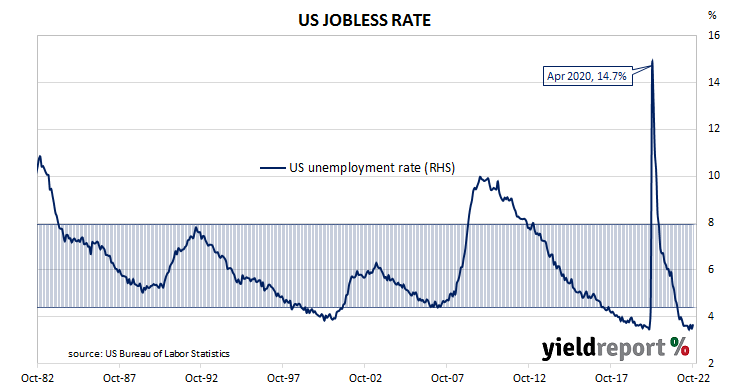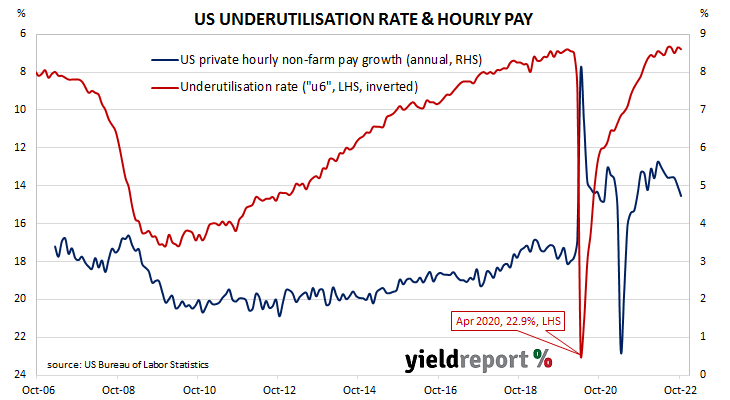Summary: Non-farm payrolls up 261,000 in October, greater than expected; previous two months’ figures revised up by 29,000; jobless rate rises to 3.7%, participation rate slips to 62.2%; “not much ‘signal’ in the current movement”; jobs-to-population ratio slips to 60.0%; underutilisation rate up from 6.7% to 6.8%; annual hourly pay growth slows from 5.0% to 4.7%.
The US economy ceased producing jobs in net terms as infection controls began to be implemented in March 2020. The unemployment rate had been around 3.5% but that changed as job losses began to surge through March and April of 2020. The May 2020 non-farm employment report represented a turning point and subsequent months provided substantial employment gains. Changes in recent months have been generally more modest but still above the average of the last decade.
According to the US Bureau of Labor Statistics, the US economy created an additional 261,000 jobs in the non-farm sector in October. The increase was greater than the 200,000 which had been generally expected but less than the 315,000 jobs which had been added in September after revisions. Employment figures for August and September were revised up by a total of 29,000.
The total number of unemployed increased by 306,000 to 6.059 million while the total number of people who are either employed or looking for work decreased by 22,000 to 164.667 million. These changes led to the US unemployment rate rising from 3.5% to 3.7% even as the participation rate slipped from September’s rate of 62.3% to 62.2%.
“The unemployment rate has been in a 3.5%–3.7% range for the past eight months, so there’s not much ‘signal’ in the current movement, especially with non-farm payrolls still posting reasonable monthly gains,” said ANZ Head of Australian Economics David Plank.
Short-term US Treasury yields fell back on the day while long-term yields increased. By the close of business, the 2-year yield had shed 3bps to 4.69%, the 10-year yield had inched up 1bp to 4.16% while the 30-year yield finished 6bps higher at 4.25%.
In terms of US Fed policy, expectations of higher federal funds rates over the next 12 months softened somewhat. At the close of business, contracts implied the effective federal funds rate would average 4.15% in December, 32bps higher than the current spot rate, and then climb to an average of 4.785% in February 2023. May 2023 futures contracts implied a 5.075% average effective federal funds rate while November 2023 contracts implied 4.90%.
One figure which is indicative of the “spare capacity” of the US employment market is the employment-to-population ratio. This ratio is simply the number of people in work divided by the total US population. It hit a cyclical-low of 58.2 in October 2010 before slowly recovering to just above 61% in late-2019. October’s reading slipped from 60.1% to 60.0%, some way from the April 2000 peak reading of 64.7%.
Apart from the unemployment rate, another measure of tightness in the labour market is the underutilisation rate and the latest reading of it registered 6.8%, up from 6.7% in September. Wage inflation and the underutilisation rate usually have an inverse relationship; hourly pay growth in the year to October declined from 5.0% to 4.7%.



